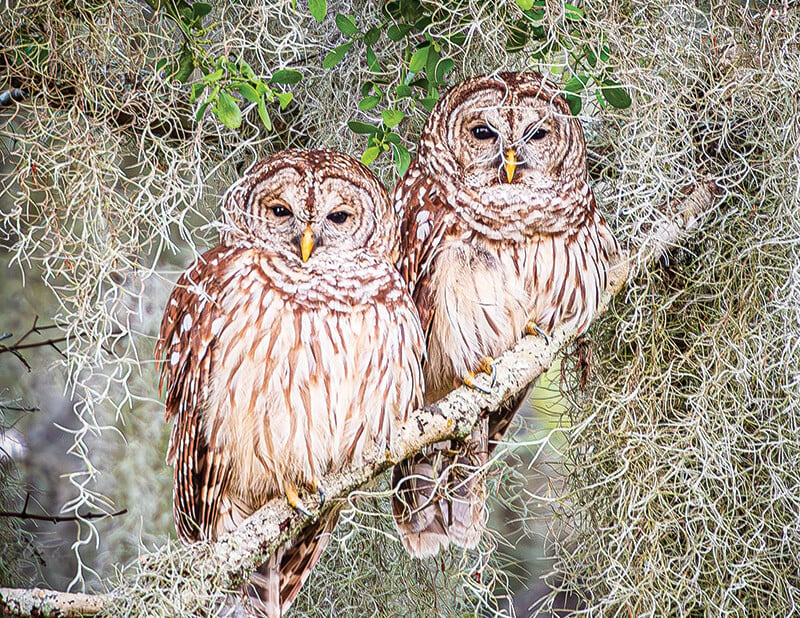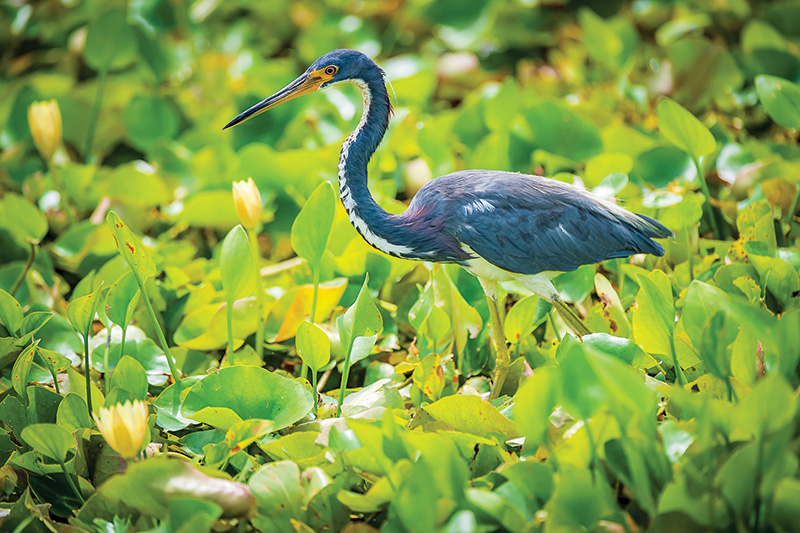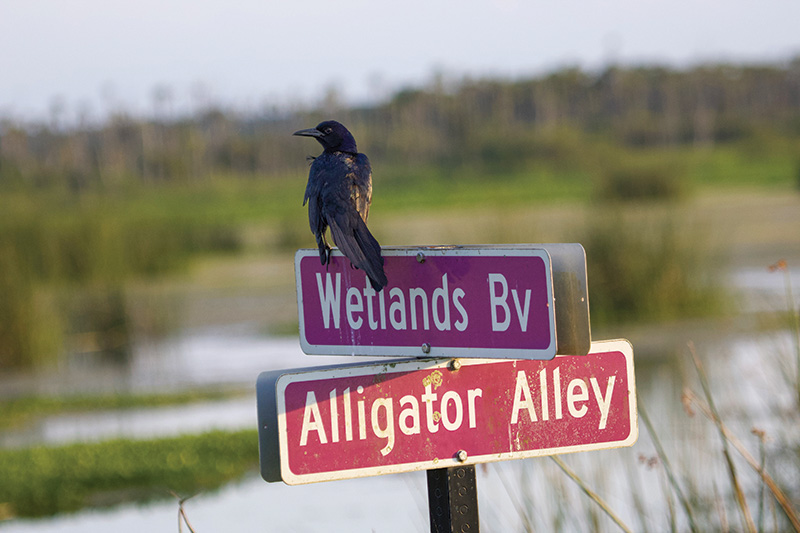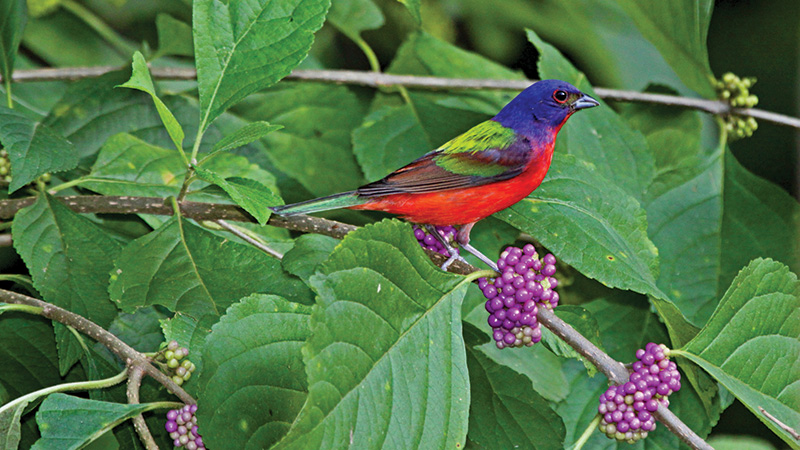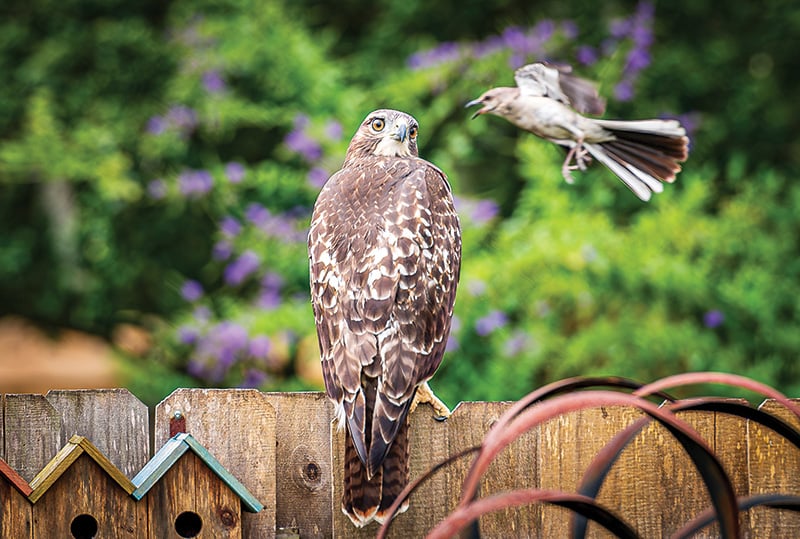2025 Orlando Birding Guide
Discover Orlando’s many group birding experiences.
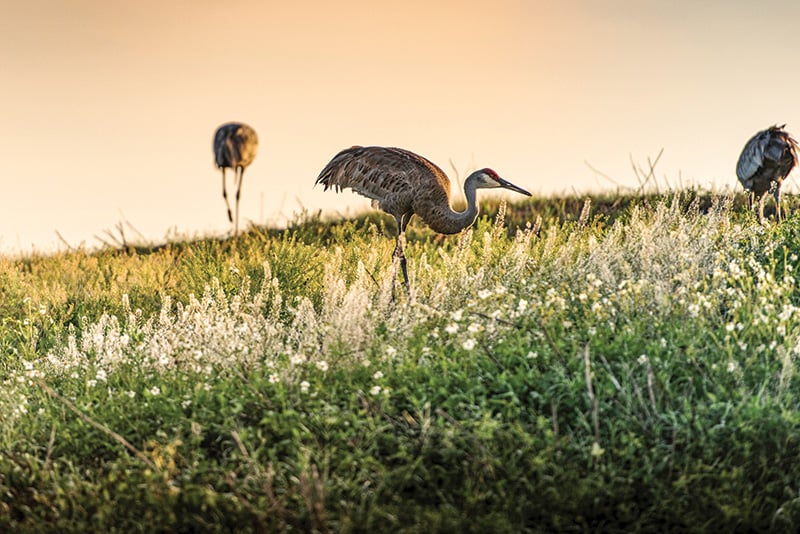
What birds will you see out in the wild? Could be these sandhill cranes, seen on an eco-tour at ©Omni Orlando Resort at ChampionsGate.
Captain Eric Gilhart vividly remembers the day he got hooked on birdwatching. Shortly after he received his Florida Master Naturalist certification, he was taking a client on a birding experience when the two came upon a Great blue heron and a pygmy rattlesnake duking it out along a shoreline.
“It seemed like a battle royal that went on for 20 minutes, but it was probably no more than two minutes,” says Gilhart. “This lady and I were in the golf cart and our jaws were on the ground. We couldn’t believe what we were seeing.”
Sights to Behold
Gilhart runs Omni Orlando Resort at ChampionsGate’s Eco Tours and introduces visitors to nature on fishing and birding excursions.
“You never know what you’re going to see out there in the wild,” says Gilhart, who has been leading nature tours for 13 years. “None of this is scripted. We have nothing in cages, we always see something crazy out there, you just don’t know what it’s going to be until you get out there.”
Tours are usually two hours long, broken into an hour by golf cart and an hour by kayak. This allows the greatest mobility— visitors have the chance to get to sites quickly by cart, and later slow down on the water.
A great time to see animals, says Gilhart, is when it’s time to feed.
“Wherever the food is is where they’re going to be,” he says. “Usually that’s right up there at the front of the hotel on the No. 8 pond. We’ll see a ton of birds— cormorants, anhingas, wood storks, Great blue herons, coots. A couple of gators like to hang out in there too.”
This format is indicative of the eco-tour experience.
“We’re going to hang out for at least 15 minutes at each stop and talk about everything we see right there. Then we usually head back to some of the more remote areas on property, where we’re most likely to see our Osceola turkeys. There is also a myriad of smaller species. On an average day, we’re going to see 25-35 species of birds,” says Gilhart.
Seasonality is also important, as animals, just as humans, prefer the cool as opposed to being out in the heat. This makes February an ideal month for birdwatching and alligator sightings, as the cold-blooded creatures like to hang out on the banks and soak in as much sun as they can.
For more information, visit omnihotels.com/hotels/orlando-championsgate.
A Wealth of Resources
A chapter of the National Audubon Society, Orange Audubon Society has been operating for 57 years and is the second-largest chapter in Florida. In addition to its many field trips, such as beginner’s classes, monthly trips to Leu Gardens, weekly trips to Mead Garden and workshops for young birders, the chapter has an active YouTube channel full of birding resources and videos, along with online weekly bird chats. Birding enthusiasts can also take part in surveys that support management practices.
“It feels like a field trip, but you’re counting birds for science,” says Deborah Green, Orange Audubon Society president. “It’s a nice way to come into our birding community. We’ve seen how certain species have increased over the years.”
In addition, says Green, the chapter has been actively growing participation among the Hispanic population and is developing the Apopka Birding Park at the entrance to the wildlife drive.
The 20,000-acre facility is a former nursery site that was on a waste management surplus list and was dedicated to the city of Apopka, thanks to the Orange chapter’s efforts. In March 2024, the chapter received a 30-year lease, with unlimited renewals, to the property. They’re currently in fundraising mode and hope to open the facility in Spring 2025.
While you’re out birding, Green stresses that it’s important to minimize your footprint as much as possible.
“One of the important things is to stay on the trails,” she says. “You don’t want to be thrashing through habitat because then you’re destroying that ecosystem.”
Be cognizant of nests, she adds—if you walk near them, it could give predators easier access.
“A bird just flies right in; it’s not leaving any scent. But someone walking around the base would leave a scent. You’ve got to stay away from the nest,” she says.
February Bird Sightings
The Apopka Wildlife Drive and Orlando Wetlands Park are great sites for migrating ducks and resident birds such as herons, egrets, spoonbills, wood storks and raptors. And the options in Central Florida are numerous, no matter what you’re looking to see.
“If you go to the Pasco Wildlife Drive, you’ll find Northern harriers that skim low over the fields and water,” says Susan Thome-Barrett, Orange chapter board member and co-host of its bird chat series. “And we do get an increase in the kestrels and peregrine falcons that move down. Of course, we always have a resident population of bald eagles.”
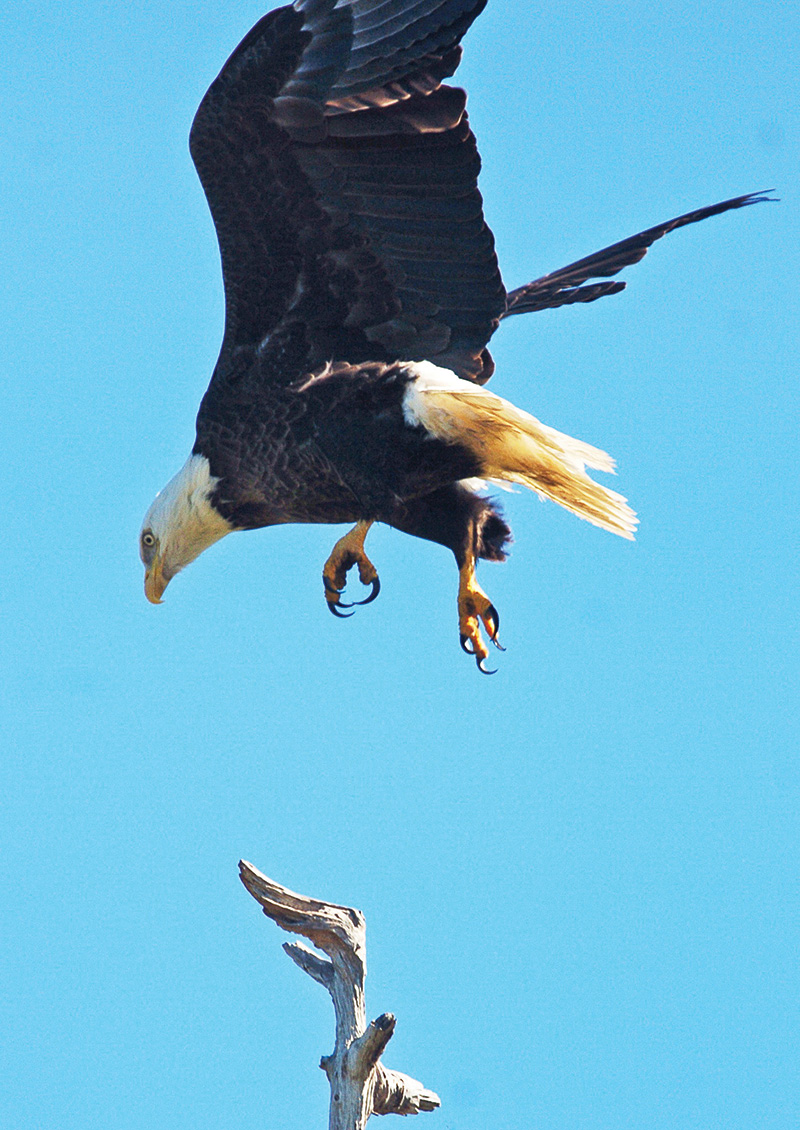
Bald eagle sightings are a regular occurrence during the winters in Central Florida. Photo by Roberto Gonzalez
February also welcomes the first neotropical birds to the area. For first-time birders, Thome-Barrett recommends Mead Garden as a nice urban park that’s not overwhelmingly sized but has a nice variety of habitats. Look for a family of swallowtail pipes and the resident barred owls.
Learn even more about birding and visit a site that’s normally only open to pedestrian and bike traffic at the Orlando Wetlands Festival on February 22, sponsored by the Orange chapter. They’ll be on site to answer all your questions. For more information, visit orlando.gov/Events/Orlando-Wetlands-Festival-2025.
For additional birding resources, visit orangeaudubonfl.org. Find the Orange Audubon Society on YouTube at youtube.com/@orangeaudubonsociety7734.
How to avoid a snake bite while exploring nature
While water, sunscreen and sturdy shoes are musts, the most important thing for a foray into the wild is having a fully charged cell phone with you, and to slow down and respect nature.
“Make sure you have plenty of bars in case you get into trouble,” says Gilhart, “in case you’re in an emergency in a remote area. Florida has six varieties of venomous snakes, and you’ll be in trouble if you get out there and you get bit by one of those. You might not make it back to your car and that’s why the cell phone comes in handy.”
“It’s just one of those things in nature that you have to be on the lookout for,” Gilhart adds. “That’s why it’s very, very important to move very slowly through nature, because as you’re walking through, you’re going to start to notice animals—water moccasins for instance. They don’t want to eat you, and they can’t breed with you, so they really have no interest in you whatsoever.”
Be on the lookout for visual cues to a snake’s strike: if they get into a ball, put their head in the middle of that ball and open their mouth wide and they expose their white interior, they’re getting ready to bite.
“If you’re moving through there really fast you might stumble up on that a little bit too quick,” says Gilhart. “Move super slow so you’ll spot him first and take a nice long detour around.”
Creating your own bird-friendly habitat
Want to build a birding zone in your own yard? Plant a native garden. In addition to adding food sources for birds, you’re also maintaining Central Florida’s biodiversity.
“People who have planted native plants do see an uptick in the birds in their yards,” says Green. One of her favorites is sugarberry.
“That plant is very abundant and if you watch where birders are looking, it’s in the sugarberry,” she adds. “That’s where the birds are. It has both the caterpillars that the birds need and little fruits.”
Caterpillars, Green says, are essential to nesting birds.
“Caterpillars provide food to songbirds during nesting, so that they can get through a clutch of young. They’re essential at that time,” she says.
Green also suggests planting wild black cherry, a cherry tree that is native to Florida.
“It’s a beautiful tree that gets pretty big,” she says. “Its berries are the right size for the birds, and it also draws many caterpillars.”
Look for the black cherry’s white flowers in bloom this month. You can also identify a black cherry by its serrated leaves that have a shiny surface.
One of Thome-Barrett’s favorite plants for attracting birds is tropical sage, or salvia, the largest genus of plants in the sage family. It comes in three colors native to Florida: white, pink and red.
“The hummingbirds prefer the reds, that’s my favorite,” she says. “I’ve seen small caterpillars in it, which is good for the birds, and I’ve seen painted buntings eating the seeds.”
Small and colorful with red, green and blue feathers, painted buntings (above) make their winter in Florida and fly north for the summer to raise their young.
“It’s a good all-around plant, easy to grow,” Thome-Barrett adds. “The bees love it, the butterflies love it and the birds enjoy it. So, you can get both the hummingbirds that go for the nectar and then the seed eaters after it’s finished blooming.”
Thome-Barrett and Green suggest visiting a nursery to learn more about the best plants and trees that work well in Central Florida’s soil. Also, keep a look out for native plant sales, such as Leu Gardens’ annual sale, this year March 8-9, and the Florida Native Plant Society’s annual sale in October.
